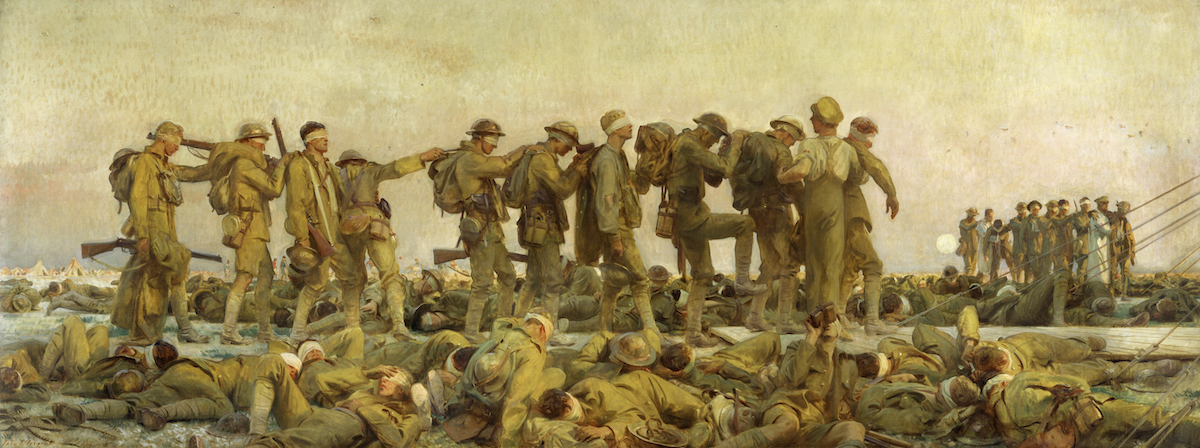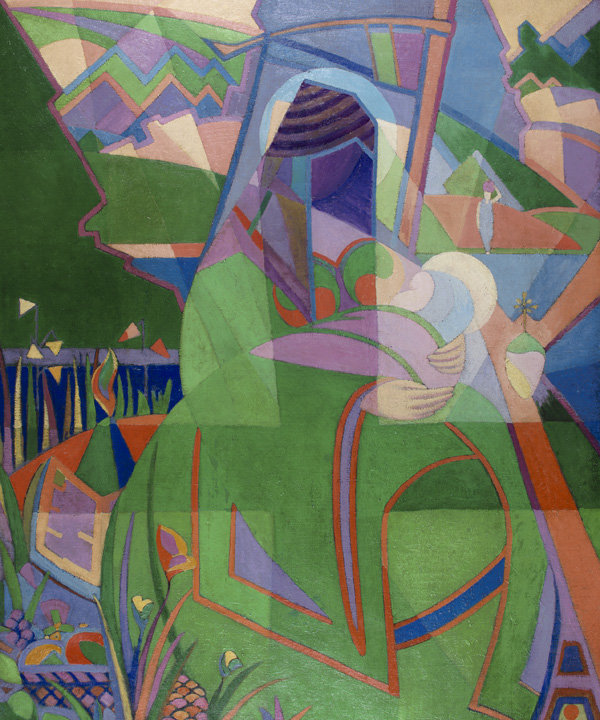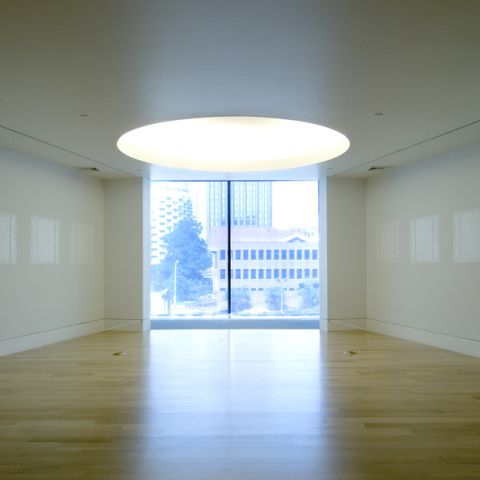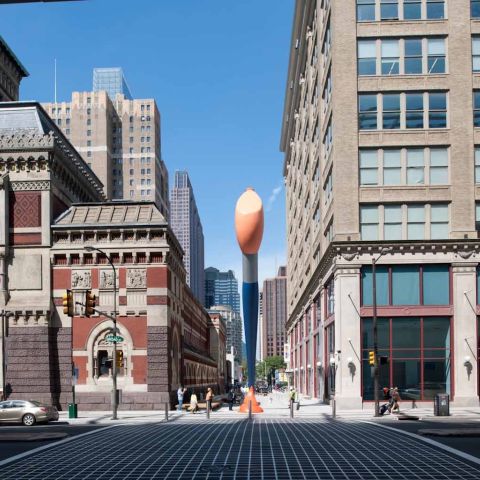World War I and American Art
Coinciding with the centenary of America’s involvement with the war, World War I and American Art will be the first major exhibition devoted to exploring the ways in which American artists responded to the First World War.
The first major museum exhibition to revisit this unprecedented global event through the eyes of American artists, World War I and American Art will transform the current understanding of art made during the war and in its wake. The war's impact on art and culture was enormous, as nearly all of the era's major American artists interpreted their experiences, opinions and perceptions of the conflict through their work.
World War I and American Art is organized around eight themes: Prelude: The Threat of War; Hartley and Hassam: Tenuous Neutrality; Debating the War; Mobilization; Modernists and the War; Battlefields; The Wounded and the Healers; and Celebration and Mourning. Arranged to follow the narrative of the war itself, the exhibition will show how artists chronicled their experiences of the unfolding war as it crept closer to home and then involved them directly as soldiers, relief workers, political dissenters, and official war artists.
The exhibition includes numerous high-profile loans, among them John Singer Sargent’s monumental painting Gassed from the Imperial War Museums in London. This painting, which has not been seen in the United States since 1999, was part of a commission to demonstrate British-American cooperation during the war.
World War I also unfolded when modernist art was being digested, adapted, and transformed by the American art world. Images made during the war reveal American artists in transition, using more experimental forms to capture the apocalyptic tenor of the conflict but also drawing on a straightforward realist manner to make the human experience accessible to their audience.
The exhibition features 160 works by 80 artists encompassing a broad variety of stylistic approaches, viewpoints, and experiences through paintings, drawings, sculpture, prints, photographs, posters, and ephemera. A diverse array of both well-known and under-recognized artists is represented including Ivan Albright, George Bellows, Charles Burchfield, John Steuart Curry, Howard Chandler Christy, James Montgomery Flagg, Henry Glintenkamp, Marsden Hartley, Childe Hassam, Carl Hoeckner, Mary Reid Kelley, George Luks, John Marin, Violet Oakley, Georgia O'Keeffe, Joseph Pennell, Jane Peterson, Horace Pippin, Debra Priestly, Man Ray, Boardman Robinson, Norman Rockwell, John Singer Sargent, John Sloan, Edward Steichen, and Claggett Wilson. A small selection of work by contemporary artists who have confronted World War I's legacy in their work will also appear, as well as a Fall 2016 exhibition of work by living military veterans in the Warrior Writers program in Philadelphia.
In Depth with John Singer Sargent's "Gassed"

Gassed is based on a haunting scene the artist witnessed at an evacuation checkpoint—rows of British soldiers, their heads wrapped in gauze to protect eyes temporarily blinded by mustard gas, being led by orderlies to a dressing station. The painting, widely regarded as Sargent’s late masterpiece, conveys the waste and tragedy of conflict and is one of the most disturbing humanistic commentaries on war. Gassed brings together many of the themes that are essential to the story of the war and this exhibition: differing perspectives on the war and its larger meanings; the camaraderie of soldiers at camp and in the field; the harrowing pain of combat, the dignity of those who sacrifice for their country, and the heartbreaking realities of war, regardless of its justification.
Sargent and his fellow artists had a leading role in chronicling the impact of World War I, crafting images that affected public opinion, supporting the U.S. government’s mobilization efforts, and helping to shape the way soldiers were remembered in its wake. Some artists showed the efforts of the Red Cross and other relief workers, or the effect that the war had on women and families on the home front. Others witnessed the devastation brought by the war on cities and on bodies, producing work haunted by the experience. Once the war finally ended, artists produced major paintings that commemorated Armistice celebrations or memorialized its human toll.
Exhibition Schedule
| New York Historical Society (New York, NY) | May 26–September 3, 2017 |
| Frist Center for the Visual Arts (Nashville, TN) | October 6, 2017–January 21, 2018 |
In the News
New York Times: World War I - The Quick. The Dead. The Artists.
Washington Post: What Can Artists Do When the World Turns Ugly?
PBS NewsHour: How American Artists Captured the Great War Up Close
CBS: Positively Philadelphia: World War I and American Art
The Art Newspaper: The Pennsylvania Academy of the Fine Arts Honors Veterans
The New Criterion Highlights World War I and American Art
Newsworks: John Singer Sargent Painting on the Horrors of War Coming to Philly
Philadelphia Inquirer: Epic, 'Harrowing' Painting of War Travels to PAFA for Exhibit
Broad Street Review: PAFA’s World War I and American Art: How over there looked over here
Exhibition Support

World War I and American Art is made possible in part by major grants from the National Endowment for the Humanities:
Exploring the human endeavor, and from the Henry Luce Foundation.
The Presenting Sponsor for this exhibition is the Exelon Foundation and PECO.
Additional funding provided by grants from the David A. and Helen P. Horn Charitable Trust, Edwin L. Fountain, the Wyeth Foundation for American Art, The McCausland Foundation, the General Representation of the Government of Flanders to the USA, Mrs. Helen Horn Bickell, Carolyn Horn Seidle, Ellen and Leonard Milberg, Furthermore: a program of the J.M. Kaplan Fund, Bank of America, Mr. and Mrs. Kevin F. Donohoe, Connie and Jules Kay, Dr. and Mrs. J. Brien Murphy, and Ken Woodcock.
This exhibition is supported by an indemnity from the Federal Council on the Arts and the Humanities.
General operating support provided, in part, by The Philadelphia Cultural Fund.
Explore More Exhibitions
We're so excited you're planning to visit PAFA!
Make time for art — visit us Thursday to Sunday.
Before reserving your tickets, please review helpful information about museum hours, accessibility, building access, and special admission programs.
If you have any questions, feel free to reach out to us at visitorservices@pafa.org — we’d love to help!






